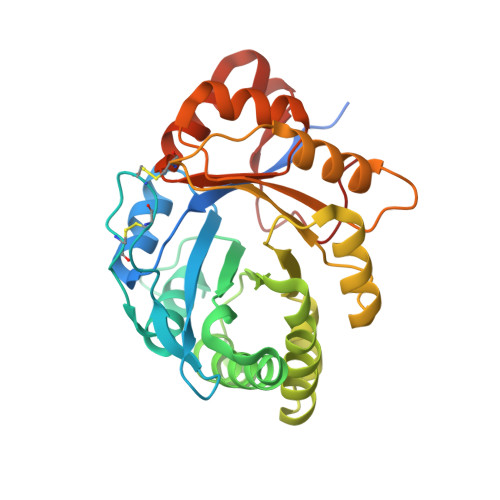Structural Insights into Substrate Binding of Brown Spider Venom Class II Phospholipases D.
Coronado, M.A., Ullah, A., da Silva, L.S., Chaves-Moreira, D., Vuitika, L., Chaim, O.M., Veiga, S.S., Chahine, J., Murakami, M.T., Arni, R.K.(2015) Curr Protein Pept Sci 16: 768-774
- PubMed: 25961401
- DOI: https://doi.org/10.2174/1389203716666150505231625
- Primary Citation of Related Structures:
4RW3, 4RW5 - PubMed Abstract:
Phospholipases D (PLDs), the major dermonecrotic factors from brown spider venoms, trigger a range of biological reactions both in vitro and in vivo. Despite their clinical relevance in loxoscelism, structural data is restricted to the apo-form of these enzymes, which has been instrumental in understanding the functional differences between the class I and II spider PLDs. The crystal structures of the native class II PLD from Loxosceles intermedia complexed with myo-inositol 1-phosphate and the inactive mutant H12A complexed with fatty acids indicate the existence of a strong ligand-dependent conformation change of the highly conserved aromatic residues, Tyr 223 and Trp225 indicating their roles in substrate binding. These results provided insights into the structural determinants for substrate recognition and binding by class II PLDs.
Organizational Affiliation:
Centro Multiusuario de Inovacao Biomolecular, Departamento de Fisica, Universidade Estadual Paulista (UNESP), Sao Jose do Rio Preto, 15054-000 SP, Brazil. [email protected].



















